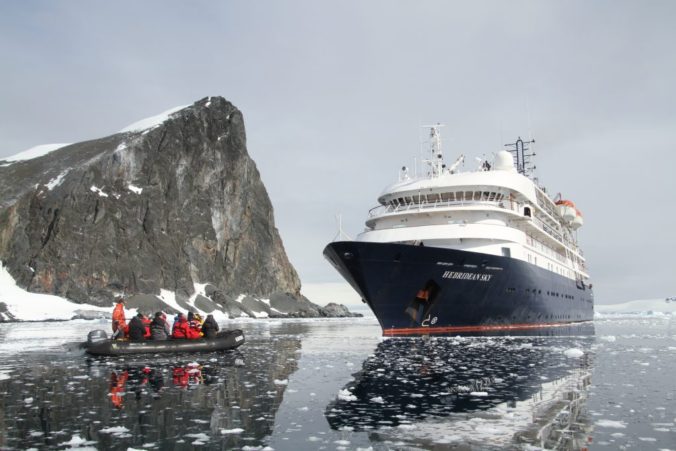Last year, I had been invited onboard as Guest Scientist by Antarctica21 to oversee the FjordPhyto citizen science project I developed with Dr. Maria Vernet at Scripps Institution of Oceanography, and to give science lectures with the Expedition Staff each evening. Check out the short mini documentary to see what we were up to!
At the beginning of December 2017, I flew down to Ushuaia, Argentina: the last city in South America, the gateway port to Antarctica.
I boarded the MS Hebridean Sky, a 296-foot cruise ship, and was warmly welcomed by Polar Guide Staff Bob Gilmore and Annette Bombosch (FjordPhyto champions and co-founders of the Polar Citizen Science Collective).
During the month I was on board, we launched twelve citizen science zodiac cruises visiting seven different fjords along the peninsula. You can check out some photos from that trip @womanscientist or @fjordphyto on Instagram!

With the quick five-day turnaround schedule, this allowed us to sample some of the same fjords repeatedly during the month, capturing changes from week to week.
Each science zodiac ride included six to nine passengers eager to participate. For the month I was on board, that means 72–108 passengers directly assisted in gathering data with FjordPhyto! Those who were not on the citizen science zodiac trips were still able to learn about the project through the evening recap presentations. We were excited to receive extremely positive feedback from the people who participated.

The samples collected by FjordPhyto citizen scientists contribute to the PhD thesis work of myself and graduate student Martina Mascioni in Argentina. We are trying to understand how polar phytoplankton are influenced by melting glaciers within fjords along the peninsula. Nearly 87% of the glaciers along the peninsula are in retreat (Cook et al., 2005, 2016) and the west Antarctic Peninsula is one of the fastest warming regions in the world. As climate change touches every place in the world, partnering with the tourism industry can help us look over larger geographical areas through a longer sampling season, seeing seasonal changes from November through March.
We spent a memorable 29-days traveling the Antarctic Peninsula sharing the wonders of this wild place with over 400 passengers in total. Having the opportunity to see the project in action provided extremely valuable perspective on what tour operators, staff, and passengers experience while in the field.
Antarctica is the only continent – set aside by the Antarctic Treaty – where peaceful and scientific endeavors take place. To be able to include the tourism industry in the legacy of polar research provides a powerful way to educate, involve, and share science with the public!
We all go home having a sense of awe and respect for this region. We become Antarctic Ambassadors.
You can get more updates about this project at www.fjordphyto.org and if you want to support the work we are doing with the tourism industry in the polar regions take a look at our crowdfunding campaign and share it with your friends and family! We really appreciate your support!
I want to thank the National Science Foundation for providing funding and travel support to Ushuaia, and Antarctica21 for inviting me onboard as Guest Scientist. I also want to thank my advisor Dr. Maria Vernet, Martina Mascioni, and all of the polar staff and citizen scientists for their enthusiasm and participation in FjordPhyto!
Share this:






































Recent Comments